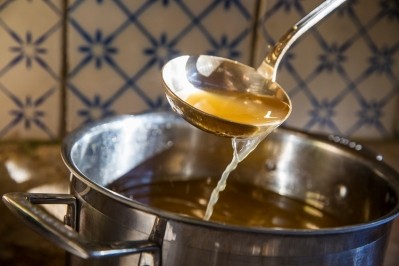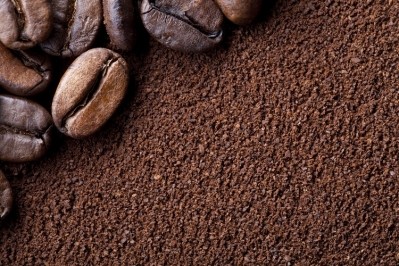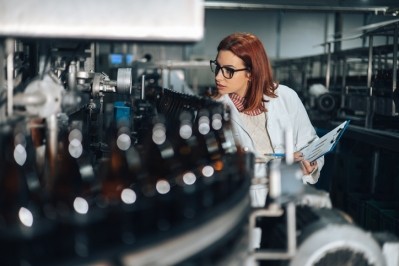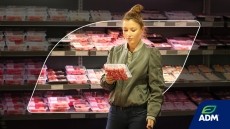‘Chicken carcasses should be seen on par with chicken fillets’: Valorising poultry by-products for food

Valorising meat by-products is not a new practice: stock has long made from bones and meat scraps; calf rennet used in artisanal cheese production is a by-product of veal production; and offal has long been a popular dish in many parts of the world.
But with pressure mounting to produce more food with fewer natural resources, valorising meat by-products is attracting increased attention from food makers.
In poultry production, for example, approximately half the bird is left once the prized fillets, drumsticks and wings are removed. How can valorisation technologies help to produce more with less?
Three protein products from the same poultry carcass
According to current industrial practices, once the sought-after parts of chicken and turkey are removed for human consumption, enzymes are used to release the fat, break down the leftover proteins, and extract bones and minerals.
For the most part, the fat is used for animal feed. The protein also used in animal feed, especially pet food, but also in food. Can more be valorised to end up on our plates?
At the Norwegian Institute of Food, Fisheries and Aquaculture Research (Nofima), scientists believe the poultry carcass can be just as valuable as the best known cuts. “It is time that we start looking at chicken carcasses as a raw material that is on a par with chicken fillets, and not a rest raw material,” said Nils Kristian Afseth, senior scientist at Nofima.
With newly developed processes, the research institute is extracting three different protein products – in addition to fillets – from the same poultry carcass.
The recently completed project coined Notably (an abbreviation of ‘novel cascade technology for optimum utilisation of animal and marine by-products’) was founded on the understanding that poultry protein can be divided into two main groups: muscle proteins and connective tissues. While these proteins have ‘completely different’ characteristics, using today’s processing techniques all proteins end up in the same product.
From 2018 to 2022, the Notably project sought to investigate whether it was possible to develop a process for extracting different types of protein hydrolysates using different compositions from the same raw materials. Research partners Nofima, Sintef Industri, Simula, Lund University, Brødrene Karlsen, Biomega Group, Norilia and Bioco concluded that it was.

As a result, the researchers were able to develop three protein products instead of one. This is because connective tissue proteins in poultry melt at a higher temperature compared to similar proteins from pigs, which are the main source of gelatine. “So, by combining different temperatures and enzymes in relation to different proteins, we have developed a process where we get not just one, but three types of protein products from the same poultry carcass,” said Afseth.
Enriching foods with poultry peptides
Under the Notably project, three different protein products were developed: a muscle peptide mixture; a mixture comprising of large collagen peptides; and a mixture comprising of small collagen peptides.
The three have ‘completely different’ characteristics and applications, explained Nofima. Muscle peptides, for example, are highly nutritious. “These products will be…great if you want to protein-enrich food, or if you want to develop food products that are suitable for rapid absorption in the body,” noted the research institute, citing sports nutrition or food for ageing populations as two potential applications.
The product with a much lower nutritional quality is made from large collagen peptides. But this product has other benefits: it can be added to food and pharmaceutical products to enhance specific textures. In fact, these peptides can be compared to gelatine – a product extracted from pigs used in food production for its gelling, emulsifying, and stabilising functions. “The positive thing about poultry protein is that it can be used where pigs cannot be used for religious reasons,” explained the research institute.
And the product made from small peptides may well have potential in the develop of different types of bioactive ingredients – meaning those that affect living organisms.

A new product running 2023-2025 will now work on developing the processes to improve the utilisation of rest raw materials. Known as Spectacoll (an abbreviation of the longer-form project name ‘tailor-making specialised collagen peptides for high-end markets using by-products from the Norwegian poultry and salmon industry’), the project is being conducted in partnership with Nofima, the University of Oslo, Norilia, Bioco and Hofseth Biocare.
“Further work is now taking place along two paths: Optimising the process so that we can product all three types of protein products efficiently and with high yields, and develop potential applications for all three types of protein products,” said Afseth.
Poultry by-products for joint comfort, care and mobility
Nofima is not alone in working to increase the valorisation of poultry by-products for the food industry. Germany-headquartered ingredients supplier Symrise is sourcing chicken parts from local food production sites in France and North America to valorise the ‘other half’ of chicken.
Indeed, just 53% of the chicken is made up of the popular filet, wing, and drumstick cuts. The rest is made up of bones, skin, and carcass. “We process them as valuable ingredients, using gentile, kitchen-like processes, such as various cooking techniques, extraction, hydrolysis and drying,” Antoine Coursault, director global product line chicken & meat, BU Naturals, Food & Beverage Division at Symrise told FoodNavigator. “This way, we preserve the beneficial properties of the raw materials and deliver clean label solutions.”
Such ingredients, ranging from flavourings to broths, powders and purified fats, serve to provide mouthfeel, taste, juiciness and umami to food applications. “We offer a large palette of culinary and nutritional profiles, from roasted to boiled, with standardised levels of protein and fat, and more,” said Coursault.
The company also extracts the ‘very essence’ of selected raw materials, such as cartilage, explained Julie Le Guyader, global product manager product line chicken & meat, BU Naturals Food & Beverage Division at Symrise. These offer active ingredients such as collagen (type I and II), chondroitin sulfate and hyaluronic acid.
“Manufacturers can use them in functional foods. They can provide joint comfort, care, and mobility…The type I collagen also contributes to skin elasticity and firmness and can go into functional food and supplements for skin and nail care.”

As to how leveraging upcycled chicken ingredients can boost the sustainability profile of a product, Benoit Anet, global carbon footprint manager, BU Naturals, Food & Beverage Division at Symrise said to begin with, chicken is a better choice. “Chicken comes with the lowest carbon footprint of any type of meat. Greenhouse gas emissions from chicken lie five times lower than those from beef,” he told this publication.
In addition, chicken side-streams come with a lower carbon footprint than primary streams.
“Internal studies carried out to assess the emissions of poultry carcasses have demonstrated real and significant savings in greenhouse gas emissions, compared with fresh chicken meat. Thus, we see real potential to reduce the carbon footprint of food by upcycling side-streams into valuable ingredients.”

























